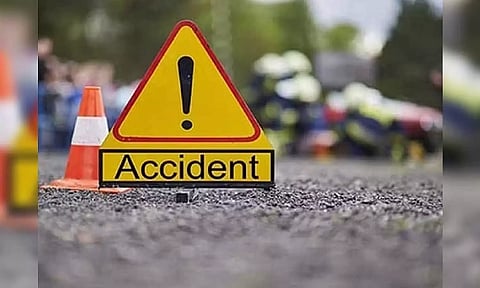

NEW DELHI: Last week, the Ministry of Road Transport and Highways (MoRTH) released a report that said as many as 19 people died in road accidents every hour in the country in 2022, which adds up to a staggering 1.68 lakh deaths. The number of mishaps had surged by 12% to over 4.6 lakh road accidents. Speeding contributed to 70% fatalities, while driving on the wrong side of the road was the second biggest killer. Tamil Nadu has the distinction of recording the highest number of accidents (64,105 or 13.9%) and the second highest count of fatalities (17,884 or 10.6%).
Those in the working age group of 18-60 years made up 83.4% of the fatalities pan-India. The highest deaths across India were among drivers of two-wheelers (74,897), followed by pedestrians (32,825). The nation now has the highest number of road fatalities globally (at 11%), despite contributing to just 2% of the global vehicular population. The reasons for road fatalities encompass everything from failure to use the prescribed safety devices, such as helmets and seatbelts, the latter of which caused 16,715 deaths; to intoxication, or driving under the influence of drugs. Apart from this, violating lane rules, using the cellphone while driving, and jumping traffic signals have also contributed to a large number of road fatalities.
It is some consolation that Chennai reported a 49% fall in fatalities, and a 31% drop in road accidents, notwithstanding the episodes of individuals losing their lives after falling into unfinished, or open storm water drains, or being ambushed by stray cattle. The Greater Chennai City Police has announced speed limits for all categories of vehicles, and made exorbitant revisions to the spot fines, hoping they would deter the speed demons.
One must also probe the role of road infrastructure in such mishaps, and whether they could have been avoided with better quality motorways, appropriate signage and robust barricading. This is important as national and state highways contributed to 60% of the road deaths despite these stretches making up barely 5% of India’s road networks.
Governments at both the Central and state levels have argued that they are working to improve road conditions and complying with norms at under construction sites. But still, a 25% spike in pothole-related deaths were reported — from 1,481 deaths in 2021, to 1,856 fatalities last year. Deaths from ongoing road works and under-construction sites also reported a marginal increase, at 4,054 fatalities. Interestingly, two months ago, Union Minister for Road Transport and Highways Nitin Gadkari said a policy is being framed to make highways across India pothole-free by the year-end. The ministry has mapped the entire NH length of 1,46,000 km and is firming up performance-based maintenance and short-term maintenance contracts to remove potholes by December. Highlighting that rains could damage highways and result in potholes, Gadkari emphasised that his ministry is doing a safety audit of national highways.
Gadkari has even claimed that work is progressing on mission mode to make India’s highways infrastructure match that of the US by 2024. Undoubtedly, it’s a lofty ambition, but fruition will require not just government intervention, but the conscientious involvement of citizens across the length and breadth of India.